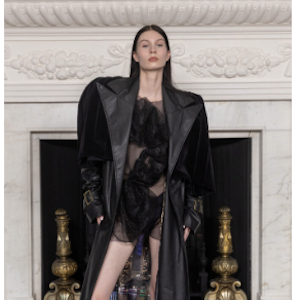None so strange as Folk
By Jasmine Gillanders
It fair to say most countries around the world have customs and costumes those outside may find a little baffling. The tomato throwing festival in Spain for example, or the mayday costumes all ribbons and bells with men dancing around a pole holding sticks in the UK? Yet these customs are important to the identities of towns and countries some of which go back centuries, and now are beginning to be documented and explored. None so Strange as Folk

Compton Verney
Our green and pleasant land can’t be more appreciated when visiting the museum of Compton Verney, away from the city to taste a breath of fresh air. The 18th-century country mansion in Warwickshire is set in glorious landscape complete with a beautiful lake. Now it houses the British Folk Art Collection, the largest collection of British native art in the UK alongside its six permanent collections.
Its latest exhibition Making Mischief, gives us a new taste of Folk costume in Britain, which includes an interesting portrayal of traditions, costumes, and their connection to nature. It is safe to say the rural surroundings of Compton Verney work in perfect unison with this first of its kind exhibition.
In the past, Folk traditions haven’t been considered as valuable enough to be exhibited, however thanks to the support of Compton Verney, curator Simon Costin is planning to change this by opening the first ever museum of British folklore in the UK.
Simon who has a background as an art and set director in fashion and who has worked with some of the most talented global names, is the perfect person to bring this to life.

Boss Morris group performer – Jonathan Cherry and the simple things
Making Mischief: Folk Costume in Britain aims to celebrate but also challenge the origins and preconceived ideas about these seasonal customs both through the exhibition but also through an ambitious programme of public workshops and events, a great way of bringing awareness about these ideals to the public.
The exhibition is particularly interesting as it showcases 40 different costumes dating back to the oldest English Abbots Bromley horn folk dance of the 13th Century to the contemporary club culture associated Boss Morris group.

Sir John Benjamin Stone – The players in the Abbots Bromley Horn Dance, c. 1900
“The World is turned upside down”, words derived from a poster in the first room of the exhibition are a perfect introductory description of the new universe we are about to enter.
Here it is possible to learn and discover about the origins of Folklore and to dig deeper into the meaning of these traditions which have been shaped and moulded over time, especially by the Victorian era who were responsible of prettifying these traditions and making them more socially acceptable to the public eye.
Ever since it originated, Folklore has been linked to superstitious connotations. After the English Reformation of 1529 and during the reign of Queen Elizabeth I, folk cultures have been increasingly attacked as its celebrations caused reason for suspicion and were suppressed because of this.
Duty diligence and sobriety were always expected and activities which involved dancing drinking and communal gatherings were always considered as unacceptable.
During the 18th century however, the upper class started to develop their own social gatherings but this time they were considered as acceptable. Pleasure gardens were developed to enjoy masquerades, music and food, a romanticized take on the communal gatherings they so much despised.

Francis Hayman – The Milkmaid’s Garland, or the humours of May day 1741-42
In addition to this, Country dances around the maypole common of Mayday saw a revival in the 20th century after they had also been banned and frowned upon by the Puritans. This time it was regarded as a wholesome representation of country life and customs. The maypole from undressed acquires a new style, ornamented with ribbons. Once again the community based tradition becomes prettified by the wealthy.

Francis Hayman – Country Dances round a maypole 1741-42
However , it is important to note that the historic use of blackface within some of these traditions is profoundly offensive and Compton Verney takes responsibility for it. It is important to know the whole truth without sugar coating anything. The exhibition truly challenges the Folk Costume origins and brings awareness to the public.
As costume both celebrates tradition and disguises our identities, seeing the development of Folk traditions over time is definitely a must see.
From celebrating spring to wearing a horse inspired disguise, Making Mischief highlights how different traditions celebrate nature and society in their own way and will continue to influence new performances, events and traditions in the future.

Detail of Jack in the Green Festival fashion, celebration of May Day
Current exploration of customs and cultures of the past are also being analysed through a witchcraft lens in exhibitions based in London such as the Museum of London Docklands in March 2023. From depictions of the 17th century both exhibitions could inform each other and allow the public to gain a deeper analysis of ideas and perceptions of the time. Are folklore and witchcraft connected? Thanks to these cultural events we will soon find out.
Cent London, Be inspired; Get involved




